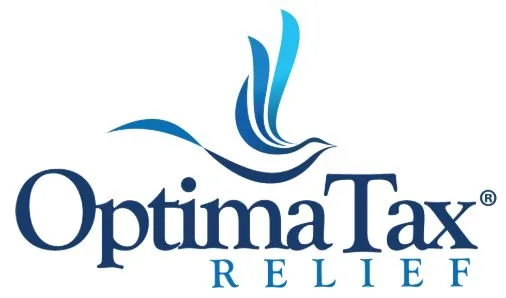Optima Tax Relief Guides Taxpayers on how to Handle an IRS Bank Levy
When you fall behind on your tax obligations, one of the most serious enforcement actions the IRS can take is an IRS bank levy. This action allows the IRS to legally seize funds directly from your bank account to satisfy unpaid tax debt. For anyone facing financial challenges or trying to get back on track with the IRS, understanding how bank levies work, and what you can do to stop or prevent them, is essential.
While the idea of your bank account being frozen is alarming, the reality is that many levies can be avoided or mitigated if you take action early. By understanding your rights, what the IRS can and cannot take, and the steps available to resolve your tax issue, you can minimize financial damage and regain control.
How an IRS Bank Levy Works
An IRS bank levy is the government’s legal tool for seizing funds directly from your financial accounts. Unlike wage garnishment, which withdraws a portion of each paycheck over time, a bank levy targets the money in your account at one moment in time.
It’s important to understand a nuance: the IRS does not freeze your bank account itself. Instead, it freezes the funds sitting in the account at the moment the bank receives the levy notice. You can continue making new deposits and withdrawals, but the money already frozen cannot be touched until the levy is resolved.
In most cases, the IRS must provide a 30-day warning before levying your bank account. Exceptions include situations where collection is considered at risk, specific employment tax situations, or when the IRS is seizing a refund. Knowing when does IRS levy bank accounts helps taxpayers act in time.
IRS Bank Levy Timeline and Process
IRS bank levies do not happen immediately. They follow a structured, months-long process that includes multiple notices. Here’s how the typical timeline works:
1. Tax Assessment and Payment Demand
The IRS first assesses your tax liability and sends you a notice requesting payment. If you do not respond or cannot pay, the IRS continues issuing increasingly urgent notices.
2. Final Notice of Intent to Levy
Before the IRS can seize funds, it must send a Final Notice of Intent to Levy and Notice of Your Right to a Hearing. This is the most critical warning. You receive 30 days to take action, request a hearing, set up an agreement, or resolve the debt.
3. Levy Sent to the Bank
If you take no action, the IRS issues the levy to your bank. Banks are legally obligated to comply immediately and freeze the funds up to the amount owed. Understanding how long before the IRS can levy a bank account allows you to plan effectively.
4. 21-Day Hold Period
The bank must hold the funds for 21 days before sending them to the IRS. This period is your opportunity to negotiate a release, demonstrate hardship, or start a payment plan.
5. Funds Sent to the IRS
If nothing is resolved within the 21-day window, the bank sends the frozen funds to the IRS on day 22. Knowing how often can the IRS levy a bank account helps you anticipate potential repeated actions.
This timeline gives taxpayers a small but crucial opportunity to avoid losing their money.
What Types of Accounts Can Be Levied?
The IRS has broad authority to levy various types of financial accounts. These include:
- Checking accounts
- Savings accounts
- Money market accounts
- Brokerage or investment accounts (with certain restrictions)
Only the money present at the time the levy is processed is frozen. Future deposits remain untouched unless a new levy is issued.
Funds That Are Exempt From IRS Bank Levies
While the IRS can seize many types of assets, some funds are legally protected. Exempt funds include:
- Unemployment benefits
- Certain pension and annuity payments
- Workers’ compensation
- Service-connected disability payments
- Specific public assistance benefits
- Payments under the Job Training Partnership Act
- Court-ordered child support judgments
Additionally, the IRS cannot take money that legally belongs to someone else. For example, if you are a joint accountholder on an account owned by a disabled family member, but the funds are exclusively theirs, that account may be protected.
Bank Fees Associated With a Levy
Banks are permitted to charge a processing fee when responding to a levy. These fees can add financial strain, especially during a time of hardship.
If the IRS later determines the levy was issued in error, you may request reimbursement for the bank fee using Form 8546. You may also request relief for overdraft fees caused by the levy.
How to Stop IRS Tax Levy on a Bank Account
Receiving a Final Notice of Intent to Levy can feel overwhelming, but acting quickly can make a significant difference. Here are the most effective steps:
Request a Levy Release
The IRS can release a levy if:
- The levy creates immediate financial hardship
- It was issued in error
- You enter an installment agreement that requires release
To prove hardship, you’ll need documentation showing you cannot meet essential expenses, such as eviction notices, overdue utility bills, or medical expenses.
Request a Collection Due Process (CDP) Hearing
You have 30 days from the date of the Final Notice to request a CDP hearing. This request pauses the levy while the IRS reviews your case and considers alternatives.
Resolve the Tax Debt
Options include:
- Paying the balance in full
- Setting up a payment plan
- Applying for an Offer in Compromise (if you qualify)
Even if you secure a levy release, you must still resolve the underlying tax issue to prevent future enforcement.
Does the IRS Leave Money for Basic Living Expenses?
Unfortunately, the IRS is not required to leave funds in your account for essentials. This is why responding quickly is so important.
If the levy prevents you from covering necessities, you can request a levy release due to hardship. The IRS evaluates living expenses using national and local financial standards for items such as:
- Housing and utilities
- Transportation
- Food, clothing, and household supplies
- Out-of-pocket medical costs
How to Avoid a Bank Levy Going Forward
Preventing future levies requires staying proactive and compliant. Here are key steps:
File Your Tax Returns on Time
Even if you cannot pay, filing your return demonstrates compliance and keeps additional penalties from piling on.
Respond to IRS Notices
Ignoring letters from the IRS is the quickest path to enforcement action. Most problems can be resolved with early communication.
Stay Current on Agreements
If you have a payment plan or settlement, make every payment on time. Falling behind can trigger a new levy.
Act Quickly After a Final Notice
Use the 30-day window to secure a hearing, provide hardship documentation, or request a payment plan.
Final Thoughts
An IRS bank levy is one of the toughest financial challenges a taxpayer can face, but it’s not the end of the road. Understanding how the process works—and taking action quickly—can help you protect your money and resolve your tax debt more effectively. With the right information and timely decisions, many taxpayers are able to avoid losing funds and move toward long-term financial stability.





